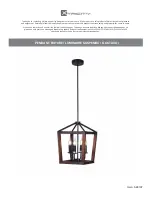
6
3
Tighten the other bolts little by little (by about
1/16 to 1/8 of a turn) until the sounds at the
corresponding striking points match the pitch of
the highest sound. Please note that tightening
one bolt also raises the pitch at neighboring
and opposite tuning bolts. Thus, after tightening
the tuning bolt with the lowest sound, again
check the pitch at the other tuning bolts before
tightening the tuning bolt with the next lowest
pitch.
Loosen all over-tightened bolts according to the
procedure described in step
1
.
4
Repeat steps
2
and
3
until the head is tuned
to the desired pitch. Once the pitch is attained,
use the palm of your hand and lightly push the
head at its center a few times to settle the head.
5
Tuning is complete when the pitch does not
change after pushing the center of the head.
* When tuning, make sure that the head and hoop
are centered on the kettle.
* A new head tends to stretch little by little over
time causing the pitch to lower. The pitch should
be checked periodically.
Adjusting the Pitch
1
Strike the head and check the sound.
The standard striking point is shown below.
The standard striking
point lies at distance
B from the kettle edge,
which corresponds ap-
proximately to 1/4 to 1/3
of the distance between
the kettle edge and the
center of the head (A).
• Sound is lower than the tuning note
→
Go to step
2
.
• Sound is higher than the tuning note
→
Loosen the tuning bolts by the same
amount in the order shown below.
When loosening the tuning bolts, al-
ways loosen them by double the desired
amount, and then return (re-tighten)
them by half. When the sound lies within
1 halftone below the desired pitch after
loosening the tuning bolts (repeatedly, if
necessary), proceed with step
2
.
Striking point
The head was partially tuned before leaving the fac-
tory (tuned to a certain pitch) however, the procedure
described below should be used to tune the timpani to
the pitch you want to play.
Lunable Ranges for Yamaha Timpani
29" (74cm) 26" (66cm) 23" (58cm)
On timpani with 8 bolts
On timpani with 6 bolts
2
Lightly strike the head with the mallet about 2
inches (5 cm) from the kettle edge at each tun-
ing bolt. Check which tuning bolt has the high-
est sound.
Counter
hoop
Correct
Kettle
edge
Wrong
Counter
hoop
Kettle
edge


























